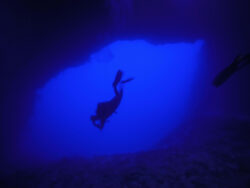Unraveling the Hidden Dangers of Camp Lejeune Toxic Water
This study delves into the toxic water crisis at Camp Lejeune, examining its historical trajectory, the harmful substances involved, and the consequential health impacts.

Systematic analysis of relevant research studies elucidates the extent of contamination and its implications on affected residents.
Additionally, attention is given to legal repercussions for victims, providing a comprehensive overview of this significant ecological disaster and public health concern.
Key Takeaways
- Camp Lejeune's water contamination crisis began in the 1950s due to improper disposal of industrial solvents, leading to the infiltration of harmful substances into the water supply.
- Inadequate waste management practices and regulatory oversight contributed to the contamination, while bureaucratic inertia and a lack of understanding of the severity of the issue delayed remedial actions.
- The toxic water had significant health impacts on residents, ranging from acute ailments to chronic conditions, and also affected soil quality and aquatic life.
- Extensive research and investigations have been conducted to understand the extent and origins of the contamination, propose prevention methods, and explore suitable remediation strategies for contaminated sites.
The History of Camp Lejeune’s Water Contamination

The water contamination at Camp Lejeune, a critical historical event, began in the 1950s when industrial solvents were reportedly disposed of inappropriately, permeating the base's water supply system. This led to a significant exposure of harmful chemicals including trichloroethylene (TCE), perchloroethylene (PCE), and benzene. These volatile organic compounds are known carcinogens and pose serious health risks.
Investigations revealed that inadequate waste management practices were among the leading contamination causes. More specifically, disposal of these solvents was performed without consideration for their possible infiltration into groundwater sources feeding into the base's water supply system. Such lackadaisical approach towards hazardous waste disposal points toward lapses in regulatory oversight.
Preventive measures could have included stringent rules for chemical disposal and regular monitoring of water quality levels. However, it is apparent that these crucial steps were overlooked or not enforced stringently enough at Camp Lejeune during those years.
Moreover, evidence suggests that even after detection of contaminants in early 1980s, remedial actions were delayed due to bureaucratic inertia and a lack of understanding about the severity of environmental pollution issues during this era. Additionally, there seemed to be an absence of immediate response mechanisms within the military establishment to address such crises effectively.
Understanding the Toxic Substances Found in Camp Lejeune’s Water

Extensive research has been conducted to identify the specific pollutants that contaminated the military base's supply of potable water. The findings indicate a complex mix of volatile organic compounds (VOCs), including trichloroethylene, tetrachloroethylene, and benzene. These substances were released from contamination sources such as leaking underground storage tanks, industrial area spills, and waste disposal sites.
The extent of the pollution was amplified by inadequate water filtration methods employed at Camp Lejeune. Traditional methods focused on removing turbidity or suspended matter but failed to address chemical contaminants. As a result, VOCs remained in the water even after treatment.
In order to mitigate these issues, advanced filtration techniques have been proposed. Granular activated carbon (GAC) filters and Reverse Osmosis (RO) systems are among those recommended for their effectiveness in reducing VOC levels in water supplies. GAC filters absorb organic compounds while RO systems pressurize water through a semi-permeable membrane that removes smaller contaminant particles.
However, it must be noted that while these technologies can significantly improve water quality, they may not eliminate all contaminants entirely. Furthermore, implementation challenges such as cost and maintenance requirements may pose barriers to their adoption.
Therefore, alongside improving filtration methods, there is an urgent need for stringent regulations governing potential contamination sources within military bases. This includes regular monitoring of storage facilities and industry practices along with proper waste management protocols.
Impact of Toxic Water on Camp Lejeune’s Residents

Inhabitants of the military base were subject to significant health risks due to prolonged exposure to contaminated water, with repercussions ranging from acute ailments such as skin rashes and nausea, to chronic conditions including cancer and neurobehavioral effects. Evidence supports that numerous carcinogens had infiltrated the water supply over decades, leading not only to health issues among residents but also affecting soil quality and aquatic life.
The impact on soil was marked by a drastic change in its composition and fertility. Contaminated soil effects included decreased microbial activity essential for nutrient cycling and plant growth, leading to reduced productivity of land areas within the vicinity of contamination. The proliferation of pollutants in the soil also posed risks for bioaccumulation in food chains, potentially exacerbating health risks.
Aquatic life was similarly impacted by these contaminants. Biochemical processes vital for survival were disrupted among marine organisms resulting in declining populations and biodiversity loss. Affecting everything from microorganisms at the bottom of food chains up through apex predators, this extensive ecological harm further destabilized local ecosystems.
An analytical review reveals that continuous exposure led not only to an immediate risk but also a latent one – some diseases manifest years after exposure has ceased hence making it difficult to attribute them directly to initial contamination events. This pattern has been noted particularly with certain cancers associated with benzene exposure - a prevalent contaminant at Camp Lejeune.
Conclusively, it is evident that beyond human health implications, toxic water contamination at Camp Lejeune had far-reaching environmental consequences impacting both terrestrial and aquatic ecosystems.
Studies and Research on Camp Lejeune’s Water Crisis

Numerous investigations and scientific studies have been conducted to understand the full extent of the water contamination crisis, its origins, its impact on human health and local ecosystems, as well as potential remediation strategies. The main focus has been on Camp Lejeune's water crisis which had a significant effect on both marine life and humans residing in the area.
Research efforts have primarily targeted identifying contamination sources and devising viable water crisis solutions. Among them, a comprehensive study led by scientists at the Environmental Protection Agency (EPA) identified volatile organic compounds (VOCs), like trichloroethylene and benzene, among primary pollutants within Camp Lejeune's water supply. These chemicals are known to cause adverse health effects including cancer and birth defects.
Another research track involved developing effective contamination prevention methods. Scientists discovered that regular monitoring of industrial activities near water sources could prevent pollution from reaching dangerous levels. Implementation of stringent regulations regarding waste disposal was also proposed to limit environmental harm.
Furthermore, scholars explored remediation strategies suitable for contaminated sites like Camp Lejeune. Bio-remediation - using microorganisms to break down pollutants - emerged as a promising solution due to its cost-effectiveness and environmental friendliness.
Legal and Health Repercussions for Victims of Camp Lejeune’s Toxic Water

Legal consequences and health implications stemming from the water contamination crisis have significantly impacted those who were exposed, warranting further examination. Significant legal rulings have ordered compensation for victims, with claims being processed in large numbers. These compensation claims echo the acknowledgment of a devastating health impact that has been largely supported by numerous scientific studies.
The prevalence of disease among these victims is alarmingly high, highlighting an urgent need for remedial measures and appropriate recompense. A clear correlation between the exposure to toxic water at Camp Lejeune and increased disease incidence has been established through rigorous research. The range of conditions includes various forms of cancer, neurological disorders, and reproductive issues.
Notably, it was found that individuals residing at Camp Lejeune between 1953-1987 had a substantially higher risk of developing diseases compared to the general population. This period aligns with documented incidents of water contamination due to industrial activities on base.
Meanwhile, legal battles continue as victims seek justice and financial aid to manage their health concerns. The approval rate for compensation claims remains relatively low despite the overwhelming evidence supporting victim pleas. This discrepancy suggests unresolved complexities within the adjudication process.
Frequently Asked Questions
What Steps Has the Government Taken to Prevent Such Cases of Water Contamination in Other Military Bases?
Governmental accountability has led to stricter regulations and monitoring systems for water quality in military bases, aiming to mitigate contamination consequences. These preventive measures include assessments, remediation efforts, and regular testing protocols.
How Has the Water Contamination at Camp Lejeune Affected the Marine Life in the Surrounding Water Bodies?
The contamination at Camp Lejeune has significantly impacted the marine ecosystem, leading to bioaccumulation of toxins in aquatic species. Consequences include diminished biodiversity and potential disruption of food chains within local water bodies.
Are There Any Other Military Bases Suspected to Have Water Contamination Issues Like Camp Lejeune?
Investigations reveal potential water contamination issues at various military bases, akin to Camp Lejeune. The contamination consequences and legal implications of such incidents necessitate rigorous research for effective remedial actions and policy formulation.
What Measures Are Being Taken to Ensure Clean Water Supply in Camp Lejeune Now and in the Future?
In response to contamination lawsuits and health implications, stringent measures have been implemented at Camp Lejeune. These include upgraded water treatment systems, continuous monitoring protocols, and strict adherence to federal safe drinking water standards.
How Has This Incident Influenced Policies and Regulations Regarding Water Supply and Safety in Military Bases?
The incident has led to significant policy implications and regulatory repercussions, with stricter protocols now enacted on water supply and safety in military bases to prevent similar environmental health crises in the future.
Conclusion
In conclusion, the water crisis at Camp Lejeune illustrates a tragic intersection of environmental negligence and public health. The toxic substances found in the water had profound effects on residents' health, resulting in legal repercussions.
Extensive research continues to uncover the full extent of this catastrophe. This case highlights the need for rigorous environmental monitoring and proactive measures to prevent such disasters in future military installations and other communities.




